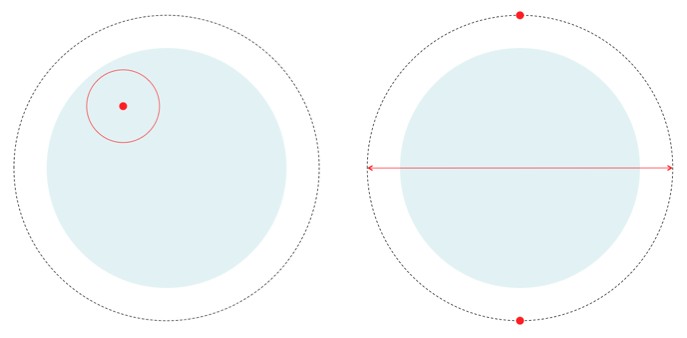The issue I see with the argument is that it basically treats infinity as a number.
It is true that as the radius of the circle gets larger and larger the circumference appears straighter and straighter, but infinity is not a number where one can go "so at infinite radius it is a straight line" but rather it is a limit... a limit that is never actually met.
This is why calculus works, by taking smaller and smaller elements that approach zero, but never actually are zero.
So if the OP doesn't treat infinity as a number, the issue goes away because the conceptualisation becomes more aligned with reality.
The other issue with infinities is that they are not all the same.
A circle with infinite radius will still have a circumference equal to 2*pi*radius. At infinit radius th circumference is also infinite, but it is not the same length as the radius.
Similarly the set of positive integers is infinite, and twice as large as the set of even numbers, even though the latter is also infinite in size.
Infinity is a concept, a useful one in mathematics, but it is not a number.
It is true that as the radius of the circle gets larger and larger the circumference appears straighter and straighter, but infinity is not a number where one can go "so at infinite radius it is a straight line" but rather it is a limit... a limit that is never actually met.
This is why calculus works, by taking smaller and smaller elements that approach zero, but never actually are zero.
So if the OP doesn't treat infinity as a number, the issue goes away because the conceptualisation becomes more aligned with reality.
The other issue with infinities is that they are not all the same.
A circle with infinite radius will still have a circumference equal to 2*pi*radius. At infinit radius th circumference is also infinite, but it is not the same length as the radius.
Similarly the set of positive integers is infinite, and twice as large as the set of even numbers, even though the latter is also infinite in size.
Infinity is a concept, a useful one in mathematics, but it is not a number.


